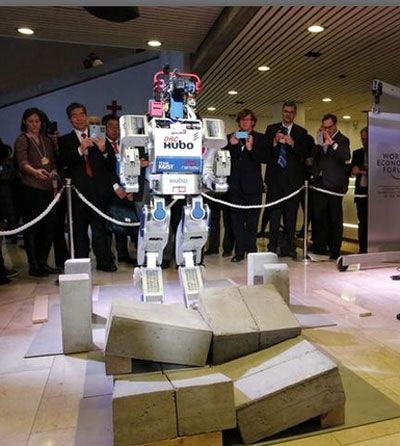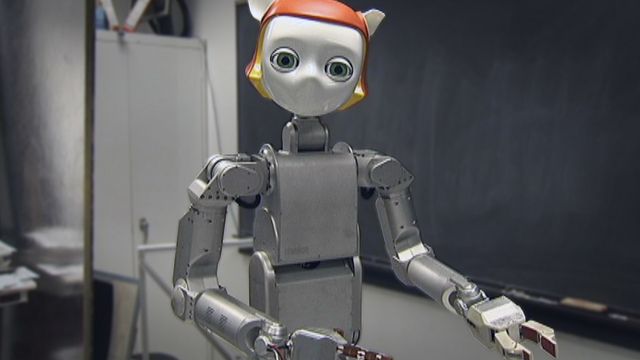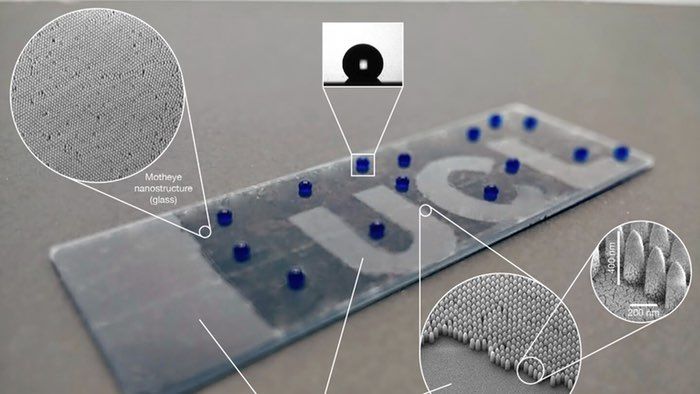Page 11482
Jan 22, 2016
Fighter Jets Are Seen ‘Chasing A UFO’ — But They Don’t Shoot
Posted by Sean Brazell in categories: drones, military
It’s not a fighter jet, it’s a Warthog (A-10), obviously.
Assuming this footage is real, that probably means it’s some kind of experimental ground attack drone. Also, I’ve read that there have been a few warthogs converted into drones themselves, so maybe it’s some sort of drone integration trials or something.
Continue reading “Fighter Jets Are Seen ‘Chasing A UFO’ — But They Don’t Shoot” »
Jan 22, 2016
I’ve heard that lobsters live forever, and they don’t actually age. Is this true, and could I keep one alive forever in an aquarium (assuming I could provide food)?
Posted by Montie Adkins in categories: biotech/medical, food, health, life extension, neuroscience
Stanford used modified messenger RNA to extend the telomeres so the whole process if it translates effectively into humans — and the evidence is suggesting it will — would be pretty straightforward especially when you consider the degree of extension which is 1000 nucleotides and the fact that the telomerase which lengthens the telomeres is only active in the body for 48 hours which means there is no significant risk of cancer due to the limited time during which proliferation of the cells could take place.
It’s true that Lobsters defy the normal aging process which in humans increases the risk of heart disease, stroke, cancer, Alzheimer’s and diabetes in humans but not only that they actually become stronger and bigger with age each time they shed their shell whereas humans and other mammals are completely the opposite suffering muscle loss, stiffness and elevated risk of fractures etc. Lobsters just keep growing and can grow to a colossal size over the years there is information on a 95 year old 23 pounder (10.5kg) here http://www.cbsnews.com/news/95-year-old-lobster-featured-at-…estaurant/
Normally a lobster dies because it is eaten by a predator I.e us!, suffers an injury or gets a disease. we know the reason they remain fit and strong and it lies in their use of telomerase to protect their DNA and prevent their telomeres shortening and as a result protecting their cells from dying they also have a vast supply of stem cells which can turn into any into any type body of tissue and this will be one of our main tools for biomedical repairs in the future along with telomere lengthening as explained below because if we can extend our telomeres we will also hold one of the keys to life extension.
Jan 22, 2016
How do astronauts grow plants in space?
Posted by Klaus Baldauf in categories: food, space

In August 2015, astronauts on the International Space Station ate the first vegetables grown in space; earlier this month, they coaxed the first zinnias to bloom.
Though space agricultural technology hasn’t quite reached the level of that seen in The Martian, overcoming the challenges presented by zero-gravity to grow plants was a feat in itself.
Continue reading “How do astronauts grow plants in space?” »
Jan 22, 2016
British hydrogen fuel cell pioneer develops cars and iPhones of the future
Posted by Klaus Baldauf in categories: energy, mobile phones, transportation
Apple-linked Intelligent Energy poised for first major commercial deployment of technology in India.
Jan 22, 2016
Future humanoid robots may end up using University of Texas creation to self-heal
Posted by Karen Hurst in category: robotics/AI
Self healing robots — definite big step forward in the broader robotics industry.
Future humanoid robots may end up using University of Texas creation to self-heal.
As cool as the Lost in Space robot was at the time the show aired in the ’60s, nowadays we think of robots as being a little more high-tech. Or even human-like. Think “Data,” the android from Star Trek: The Next Generation.
Jan 22, 2016
Vancity Futures: The future of health
Posted by Karen Hurst in categories: biotech/medical, cyborgs, health, transhumanism

AR Surgery, bionic lens for better vision than 20/20, etc. Some really cool things are on the edge of becoming available for patients.
In the future of health, we look at how new technologies are revolutionizing the area of healthcare and wellness.
Jan 22, 2016
Self-cleaning, anti-glare windows inspired by moth eyes
Posted by Karen Hurst in categories: engineering, materials, sustainability
A new type of glass to reducing electric bills.
A revolutionary new type of smart window developed by the University College London (UCL) and the Engineering and Physical Sciences Research Council (EPSRC) could cut window-cleaning costs in tall buildings while reducing heating bills and boosting worker productivity. Partially inspired by the reflective properties of moth eyes, this smart window is said to be self-cleaning, energy saving, and anti-glare.
When rain hits the outside of the smart window it forms spherical droplets that roll over the surface and pick up dirt, dust and other contaminants, then carries them away. This can either eliminate or reduce the need for manual cleaning.
Continue reading “Self-cleaning, anti-glare windows inspired by moth eyes” »
Jan 22, 2016
New Metal Glass Oxide Can Protect Living Cells From Ultraviolet Rays
Posted by Karen Hurst in categories: energy, materials, space
China’s improved glass for space.
Chinese scientists developed a method to create a transparent, glass-based material with the power and lifespan to absorb ultraviolet rays. The metal oxide-based special glass is expected to not break down under prolonged UV radiation exposure. (Photo : John T. Clarke (University of Michigan), ESA, NASA | Wikimedia Commons)
Chinese scientists have discovered a special glass that can absorb and block dangerous ultraviolet rays.
Continue reading “New Metal Glass Oxide Can Protect Living Cells From Ultraviolet Rays” »
Jan 22, 2016
Here come the robots, welcome to the next industrial revolution
Posted by Karen Hurst in categories: 3D printing, biotech/medical, business, economics, internet, mobile phones, robotics/AI
Go Hubo
The so-called ‘fourth industrial revolution’ will bring ever faster cycles of innovation, posing huge challenges to companies, workers, governments and societies alike  Implantable mobile phones. 3D-printed organs for transplant. Clothes and reading-glasses connected to the Internet.
Implantable mobile phones. 3D-printed organs for transplant. Clothes and reading-glasses connected to the Internet.
Such things may be science fiction today but they will be scientific fact by 2025 as the world enters an era of advanced robotics, artificial intelligence and gene editing, according to executives surveyed by the World Economic Forum (WEF).
Continue reading “Here come the robots, welcome to the next industrial revolution” »













